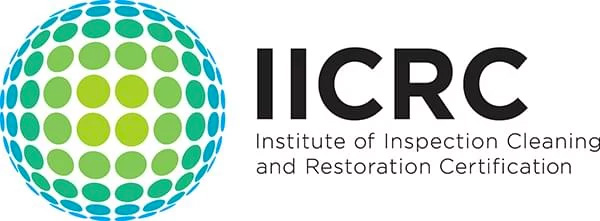A Guide To Mold Growth On Wood
Spores of mold in the household can be hazardous to your health and your family’s well-being if not dealt with appropriately. Mold is particularly destructive to wood, including furniture, floors, ceilings, and wood decks, as it can cause rot and spread rapidly. Once mold infiltrates wood, it can compromise the structural integrity and aesthetic value of the affected items.
It’s in your best interest to address any instances of spores of mold before they spread further, especially on wood within your home. Wood is a porous material, making it a prime target for mold to grow and embed itself, which can make removal more challenging. To effectively mitigate its growth on wood and other surfaces, it’s essential to understand the different types of mold that exist and the steps you can take for proper removal of mold.
In this article, we discuss the impact of mold on wood, strategies for effective removal, and various prevention measures to help protect your home and your family from the dangers of mold. Regular inspections and maintenance of wood are key to preventing mold infestations and keeping your property safe.
The Various Types Of Mold Growth
Mold on wood manifests itself in various forms, and identifying the specific type of mold is essential for effective treatment. Mold often appears as patches of black-colored dots on wood, streaks of green mold substances, or white mold discoloration on the wooden surface.
Mold thrives in damp or humid environments, making wood particularly vulnerable to mold infestations. When mold affects wood, it can penetrate the porous fibers, making removal more challenging if not addressed promptly.
While there are hundreds of mold spore species, three main types commonly appear on wood in households: black mold, green mold, and white mold. Each type can cause varying degrees of damage to wood, from surface discoloration to deep structural decay.
Addressing mold issues on wood promptly is crucial, as removal of mold not only restores the wood’s appearance but also prevents the spread of mold to other areas of the home. Prolonged exposure to mold can lead to further damage to wood and pose health risks.
Proper mold remediation, including treatment and sealing of wood surfaces, ensures a safer and mold-free living environment while preserving the integrity of your wooden structures and furniture.
Black Mold
There are certain types of black mold that are thought to be harmless. However, the Stachybotrys chartarum species of black mold is considered very dangerous and can be harmful to your health. This species of black mold is known to release mycotoxins which can cause respiratory problems and other health complications.

Damp areas are the most conducive to the growth of black mold, particularly on wood surfaces. Black mold thrives in environments where moisture and stagnant air create ideal conditions for its development. This type of mold is harder to get rid of because of its deep roots, especially on porous materials like wood, where it can penetrate and cause long-term damage.
Additionally, black mold is often accompanied by mildew, which can further deteriorate wood and other surfaces. Addressing the issue promptly by improving air circulation and reducing moisture levels is crucial to prevent mold and mildew from spreading. Regular cleaning and sealing of wood surfaces can also help protect against future infestations.
Green Mold
The molds that fall under this category have a green appearance with a soft texture. While they mostly grow on food, mold can also develop on wood surfaces that have prolonged exposure to moisture.
Wood is particularly vulnerable to green mold, as its porous nature allows mold to penetrate deeply, making it harder to remove. Mold on wood not only damages the appearance of the surface but can also weaken the wood over time, potentially compromising its structural integrity.
Additionally, mold can cause certain health complications, especially for individuals with respiratory sensitivities. Though it may not be as harmful as black mold, its presence on wood or other surfaces still needs to be addressed promptly. Regular maintenance, such as cleaning and sealing wood, can help prevent green mold from taking hold.
White Mold
The mold species under this category often appear as a white powder on food, fabrics, carpet, and wood surfaces. White mold is particularly concerning when it affects wood, as it can penetrate the porous surface, leading to deterioration over time. Unlike some other types of mold, white mold isn’t toxic, but it can still cause health complications for those exposed.
Additionally, white mold can cause wood to rot, significantly compromising the structural integrity of wooden furniture, floors, or support beams. Regularly inspecting and treating wood for signs of white mold is essential to maintain its condition and prevent further damage.
Getting Rid Of Mold In Furniture
There are different measures you can take when you identify mold and kill mold on your wooden furniture. These steps depend on the materials you can get access to. Here are a few methods for mold removal on your furniture:
Sunlight Treatment
Exposure to sunlight can reverse the effects of mold on your furniture. Mold and mildew require humidity, darkness, and humidity in the air for it to grow. By exposing it to direct sunlight, you can effectively kill mold.
Dishwashing Detergent
A mixture of dishwashing detergent and warm water can be effective to kill mold spores on furniture surfaces. You can use a soft bristle brush to clean it.

After that, a gentle wipe with a damp cloth can help to further clean the surface. Repeat this process if there is still some mold and mildew present on the surface. Once you’re sure it’s clean from dirt, wipe the furniture using a dry cloth.
Vinegar
Alternatively, you may spray some white vinegar on the furniture surface and let it settle for about an hour. When the time lapses, wipe it with a damp cloth to get the desired outcome.
Vodka
Spraying some vodka on the furniture surface can effectively kill mold spores. It’s recommended that you let it settle for at least ten minutes and then clean the dirt from the surface with a sponge. Once you’re done, ventilate the area so the furniture can dry off quickly.
Borax
Take a cup of borax and mix it with a gallon of water. Use this solution to clean the surface of your furniture and then wipe it with a cloth.
Afterward, let the furniture dry until the solution has completely evaporated. You can then apply some linseed oil to a cloth and wipe the furniture for a nice, clean finish.
How To Remove Mold From Wooden Floors And Ceilings
If you’ve discovered mold and mildew on your ceilings, floors, or wood, the first step is to identify the source of the issue. Spores of mold on wood is often caused by a leak, excessive humidity in the air, or other types of water damage. Addressing the root cause is crucial to prevent further growth of mold on wood and other areas .
Once the source is identified, clear the area to expose the full extent of the damage, particularly on wood. Using a solution of warm water, vinegar, and dishwashing detergent, spray the affected wood and leave it for about ten minutes. This method is effective for removing mold from wood while preserving its natural texture.
Afterward, wipe the wood with a clean damp cloth, ensuring the surface is thoroughly cleaned. Finally, allow the wood to dry completely to prevent moisture from encouraging mold regrowth. Regular maintenance and monitoring can help protect wood from future mold infestations.

It is recommended that you check the wood again for mold and mildew after a few weeks to ensure the mold spores are completely gone. Mold can be particularly stubborn on wood, as it can penetrate the porous material and regrow if not thoroughly removed.
Inspect all wood areas, including furniture, floors, and structural wood, for any signs of lingering mold. If mold persists on the wood or spreads further, you may need to seek professional help from experts like those at Markham Services to address the issue and prevent permanent damage to the wood.
Our professionals can provide specialized treatments that penetrate deep into the wood fibers, ensuring complete mold eradication and protecting the integrity of the wood.
Removing Mold From Wooden Decks
Wooden decks are especially susceptible to growth of spores that contain mold because of their constant exposure to the elements, such as rain, humid air, and fluctuating temperatures.
Mold on wood decks can quickly spread, compromising both the appearance and structural integrity of the wood. To effectively remove mold and mildew from wooden decks, mix a third of a cup of laundry detergent with a gallon of water and scrub the wood surface thoroughly using a hard brush.
For areas with persistent mold, adding a small amount of household bleach to the cleaning solution can enhance its effectiveness. Pay special attention to grooves and crevices in the wood where mold and mildew tends to accumulate, as these areas may require additional scrubbing and treatment with bleach.
For tougher mold stains deeply embedded in the wood, a deck cleaner containing oxygen bleach is highly effective. The bleach works by penetrating the wood fibers to lift out stubborn mold and mildew to restore the deck’s natural appearance. After cleaning, rinse the deck thoroughly to remove any remaining bleach residue and allow the surface to dry completely.
To protect the wooden deck and minimize the risk of future mold growth, consider applying a protective sealant or wood treatment. Regular cleaning with a bleach-based solution and proper maintenance will help ensure your wooden deck remains mold-free and in excellent condition for years to come.
Mold Prevention Tips
The best way to prevent mold and mildew in your home is by minimizing the humidity content, particularly in areas with wooden surfaces. Mold and mildew thrives in damp environments, and wood, being porous, is especially vulnerable to mold growth.
Controlling humidity levels in the air using a dehumidifier or improving air circulation within rooms can significantly reduce the risk of mold, especially on wood.
To prevent mold and mildew on wooden furniture, floors, and structural wood, it’s crucial to keep the wood as dry as possible. Regularly inspect wooden areas for signs of dampness or water damage, as these conditions create an ideal environment for mold to develop.
Be proactive by identifying and repairing any potential sources of water damage, such as leaks in roofs, plumbing, or near wooden window frames. Applying a protective sealant to wood surfaces can also create a barrier against moisture, further reducing the likelihood of mold.
Consistent maintenance and attention to your wood features will help ensure your home remains mold-free and your wood stays in excellent condition.
Bottom Line
Mold can be detrimental to your health and to the health of your loved ones. It can also cause structural damage to your property by causing the wood to rot. Once you identify the signs of mold in your home, it’s best to take immediate action by using the mitigation measures discussed or by contacting mold remediation professionals.
At Markham Services, we conduct mold inspections, mold testing, and post-remediation verification services for residents in Orlando and the greater Florida area. If you suspect you have a mold issue, reach out to us for a professional evaluation!


